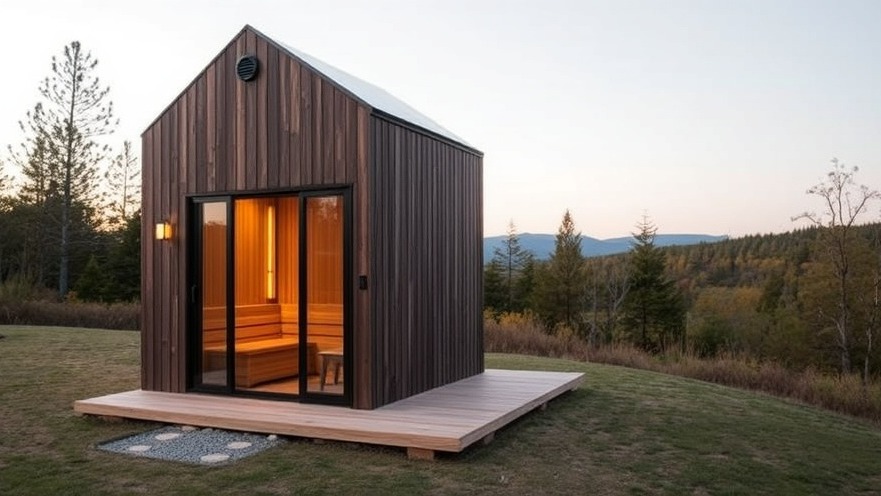
Redefining Remote Wellness: The Off-Grid Solar Sauna
As digital nomads navigate the delicate balance between work and wellness, a remarkable innovation has emerged: America's first solar-powered, off-grid sauna designed for remote locations. Unveiled by the Texas-based wellness company Thermasol, this sauna offers a unique solution not only for relaxation but also as a sustainable energy option for those living and working away from conventional power sources.
Understanding the Benefits of an Off-Grid Lifestyle
Digital nomads often seek spaces that enhance productivity while promoting mental well-being. The Solaris sauna is a testament to this need, providing a private sanctuary that allows users to unwind and detox naturally. Harnessing solar energy enables the sauna to function in areas lacking a reliable electricity supply, making it ideal for cabin retreats or even temporary setups in nature.
Exploring Ergonomics in Health and Wellness
As an ergonomics specialist, I emphasize the importance of wellness spaces that encourage good posture and relaxation. The new sauna by Thermasol aligns perfectly with these requirements, offering a comfortable atmosphere designed to help users relieve stress. The heat from the sauna relaxes muscle tension, promotes blood circulation, and enhances flexibility, which are all crucial for anyone spending long hours in front of a screen.
How Solar Power Transforms Traditional Wellness Activities
Inciting a shift in how wellness practices are perceived, the incorporation of solar power into the sauna experience not only minimizes environmental impact but also sets a precedent for sustainable living. Consider the wider implications—reducing reliance on fossil fuels could inspire similar designs in wellness industries, pushing forward the dialogue on energy consumption in remote areas.
Practical Insights for Creating a Sustainable Workspace
For digital nomads, integrating a solar sauna into a workspace can yield numerous benefits. Here are some practical tips:
Plan Your Energy Needs: One should assess the solar energy requirements to maximize the sauna’s efficiency.
Create a Wellness Routine: Dedicate time each day or week to unwind in the sauna; it serves as a great break from screen time.
Opt for Natural Materials: Enhance the sauna environment using natural elements that support the calming experience.
Envisioning the Future of Remote Workspaces
With innovative designs like Thermasol's solar sauna, the future of remote workspaces looks promising. Spaces that merge productivity and wellness will likely become more abundant, encouraging nomads to value their mental health alongside their professional output. This trend reflects a larger cultural shift toward prioritizing well-being in our increasingly digital lives.
Take the Leap Toward Sustainable Wellness
As digital nomads looking for meaningful and efficient workspaces, now may be the perfect time to foray into sustainable practices. By seeking out renewable energy solutions like solar-powered saunas, you not only elevate your work routine but also contribute positively to the environment. Imagine escaping into a sauna after a long day of remote work, rejuvenating from the stress of work while embracing nature and sustainability. Explore how integrating wellness into your remote work setup can enhance your productivity and lead to a healthier lifestyle.
 Add Row
Add Row  Add
Add 




Write A Comment